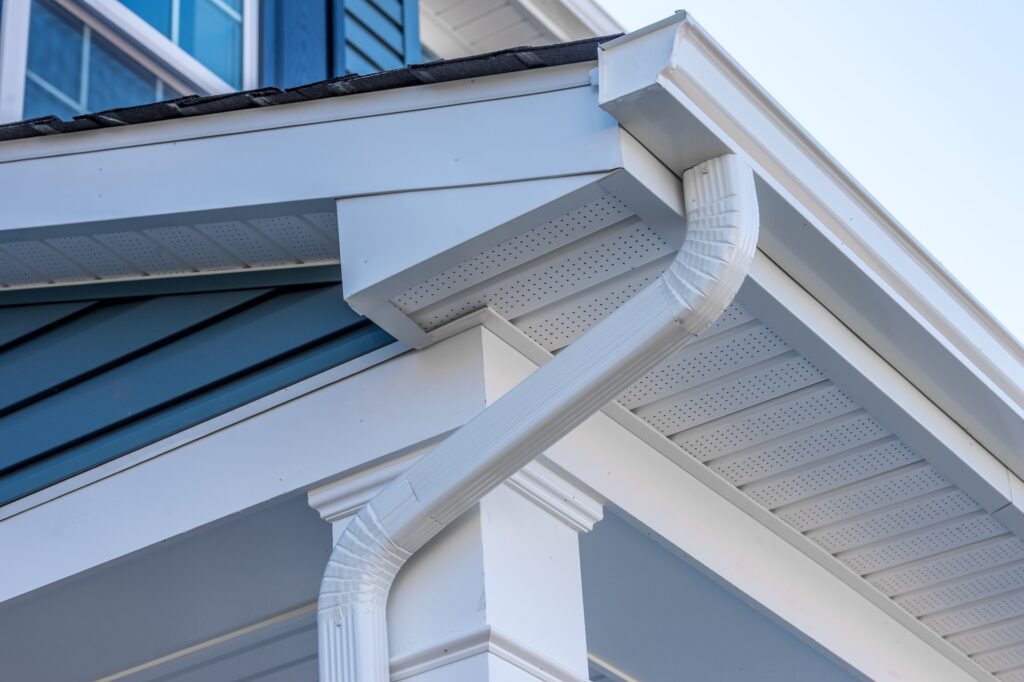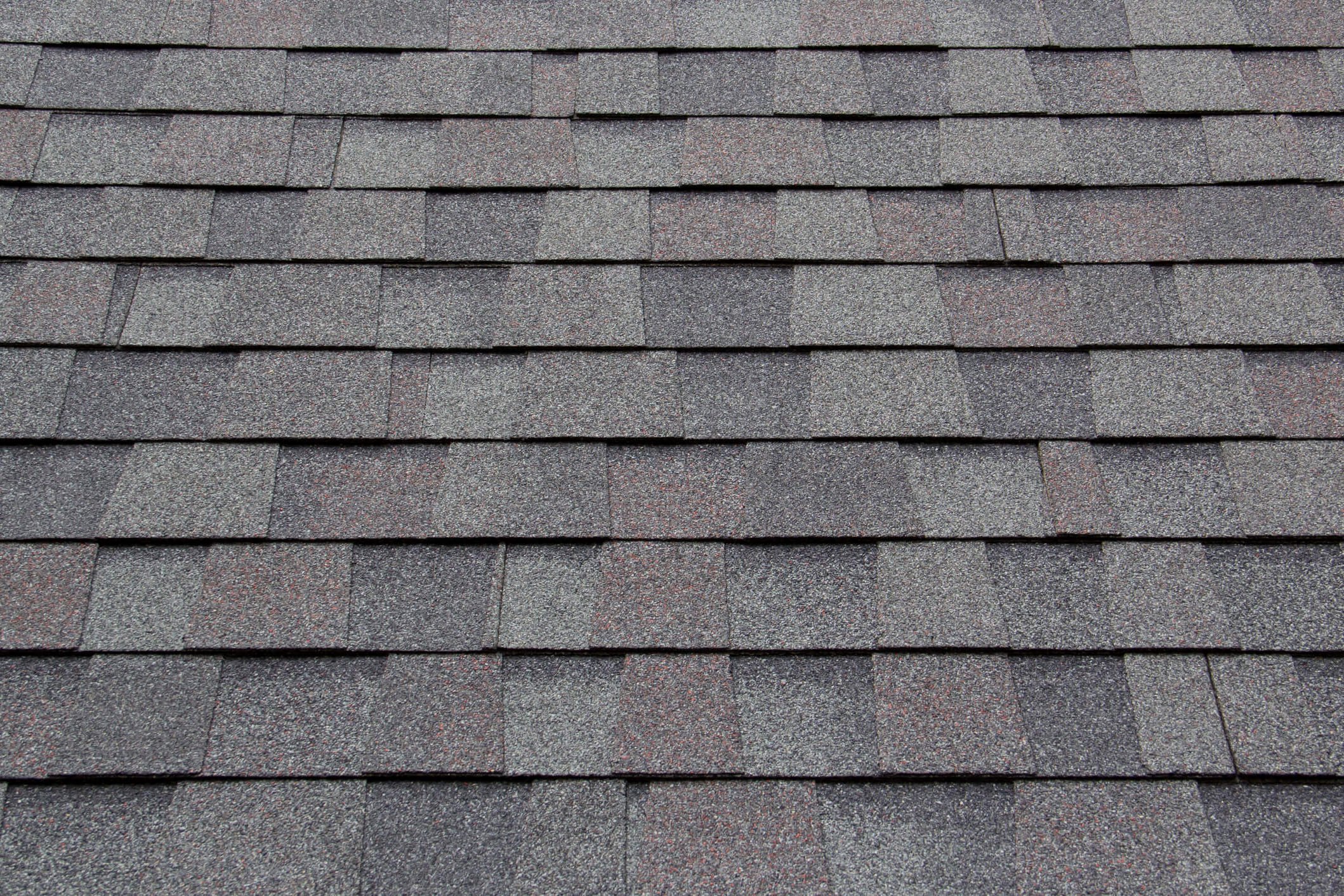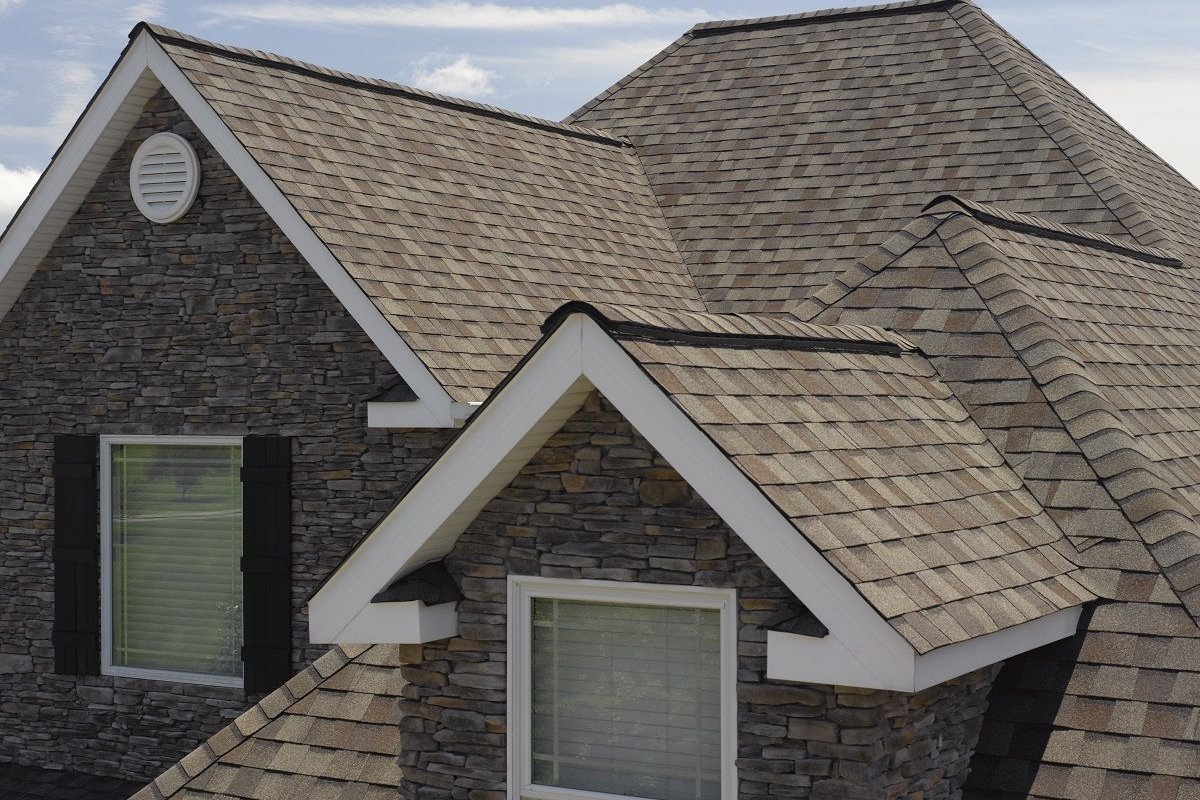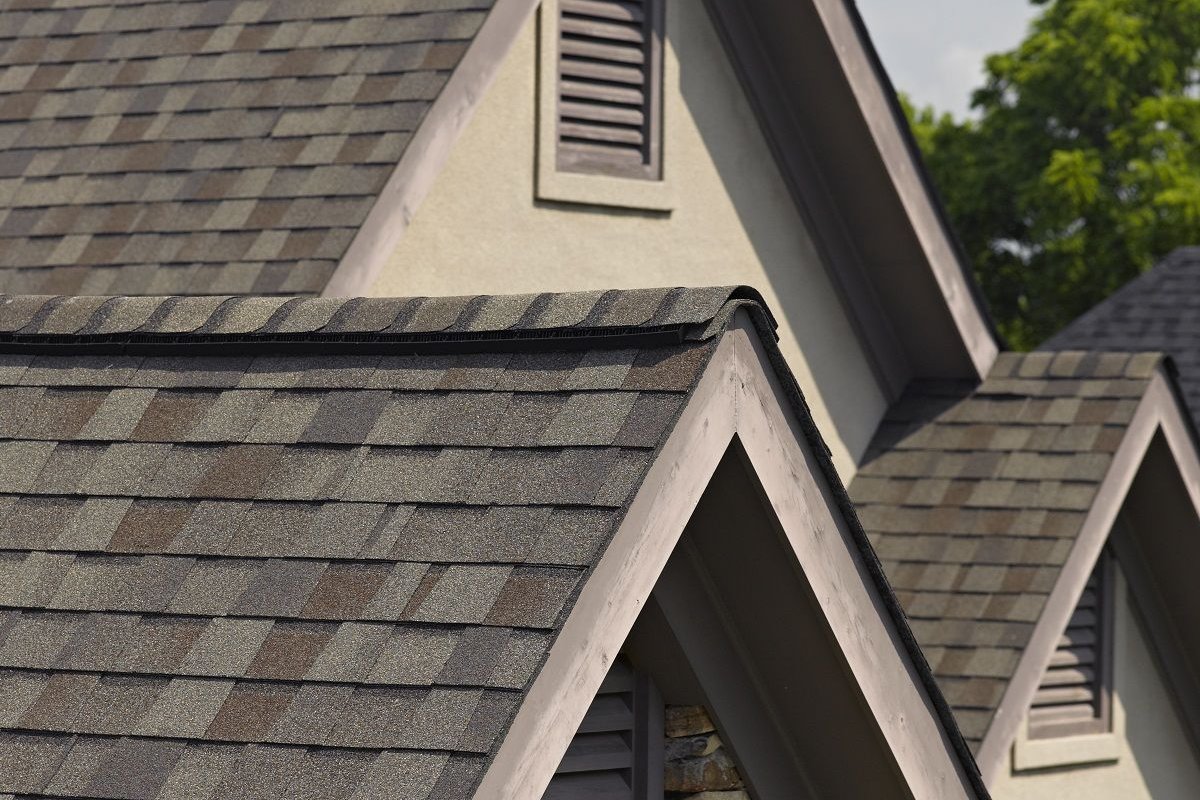Standing Seam vs. Exposed Fastener Metal Roofs: A Guide for Warren, Oregon Homeowners
Metal roofing has become an increasingly popular choice for homeowners seeking durability, longevity, and energy efficiency. Unlike traditional asphalt shingles that may require replacement every 15-25 years, a well-installed metal roof can last significantly longer, often exceeding 50 years. This makes it a compelling option for properties in Warren, Oregon, where varying weather conditions necessitate robust building materials. When considering a metal roof, homeowners are typically faced with two primary panel systems: standing seam and exposed fastener. While both offer the inherent benefits of metal, their construction, installation, appearance, and long-term performance differ significantly. Understanding these differences is crucial to making an informed decision that aligns with your budget, aesthetic preferences, and the specific needs of your home. This guide will delve into the details of each system, providing a comprehensive comparison to help you determine which is the better fit for your roofing project.
Understanding Metal Roofing Systems
Before diving into the specifics of standing seam and exposed fastener systems, it's helpful to understand the fundamental components of a metal roof installation. Regardless of the panel type, a metal roof system typically includes the metal panels themselves, underlayment installed over the roof deck, flashing to seal joints and transitions (like around chimneys, vents, and valleys), fasteners to secure the panels, and trim pieces for edges and peaks. The material of the panels can vary, including steel (often galvanized, Galvalume, or pre-painted), aluminum, copper, or zinc, each with its own characteristics, cost, and aesthetic. The choice of panel material, gauge (thickness), and finish will also impact the roof's performance and appearance, but the primary distinction in system types lies in how the panels are joined and fastened to the roof deck.
Exposed Fastener Metal Roofing
Exposed fastener metal roofing is perhaps the most recognizable type of metal roof, commonly seen on barns, sheds, and some residential properties. As the name suggests, this system involves metal panels, often corrugated or ribbed profiles, that are fastened directly to the roof deck or purlins using screws or nails. These fasteners pass through the metal panel, leaving their heads visible on the surface of the finished roof.
The panels are typically overlapped at the edges, and the fasteners are installed through both layers at the overlap. Rubber or neoprene washers are usually integrated into the fasteners to create a seal against water penetration at each screw point.
Pros of Exposed Fastener Systems:
- Lower Initial Cost: Generally, exposed fastener systems have a lower material cost per square foot compared to standing seam. The panels are simpler to manufacture, and the installation process is often less complex, requiring less specialized tooling and labor.
- Easier Installation: For experienced roofers, installation can be relatively quick compared to standing seam, contributing to lower labor costs. It's a straightforward process of laying panels and securing them with visible fasteners.
- Widely Available: Materials and contractors familiar with this system are widely available.
Cons of Exposed Fastener Systems:
- Vulnerability to Leaks: The primary drawback is the reliance on exposed fasteners. Each fastener penetrates the metal panel, creating a potential entry point for water. While washers are used, they can degrade over time due to UV exposure, temperature fluctuations, and the movement of the roof system. This degradation can lead to washers cracking, shrinking, or losing their seal, resulting in leaks.
- Higher Maintenance: Due to the potential for fastener issues, exposed fastener roofs typically require more frequent maintenance. Fasteners may need to be periodically checked, tightened, or even replaced as the washers wear out. This adds to the long-term cost of ownership.
- Shorter Lifespan: While the metal panels themselves are durable, the lifespan of an exposed fastener system is often limited by the longevity of the fasteners and their seals. A typical lifespan is 20-30 years, significantly less than standing seam.
- Aesthetics: The visible grid pattern of fasteners is less aesthetically appealing to some homeowners compared to the clean lines of a standing seam roof.
For non-urgent situations like budgeting or planning for a future roof replacement, getting an idea of costs is a great first step.
Get your free instant roof estimate
Standing Seam Metal Roofing
Standing seam metal roofing is considered a premium metal roofing system, distinguished by its raised interlocking seams that run vertically up the roof panels. These seams are typically 1 to 2 inches high and are designed to connect adjacent panels without puncturing the flat surface of the panel with fasteners. The fasteners are concealed beneath the panels, either attached to clips that are then locked into the seam or located within the seam itself, which is then folded or snapped shut.
There are different types of standing seam systems, including snap-lock (where panels simply snap together) and mechanical seam (where seams are mechanically folded or double-locked during installation). Both methods effectively hide the fasteners and create a weather-tight seal.
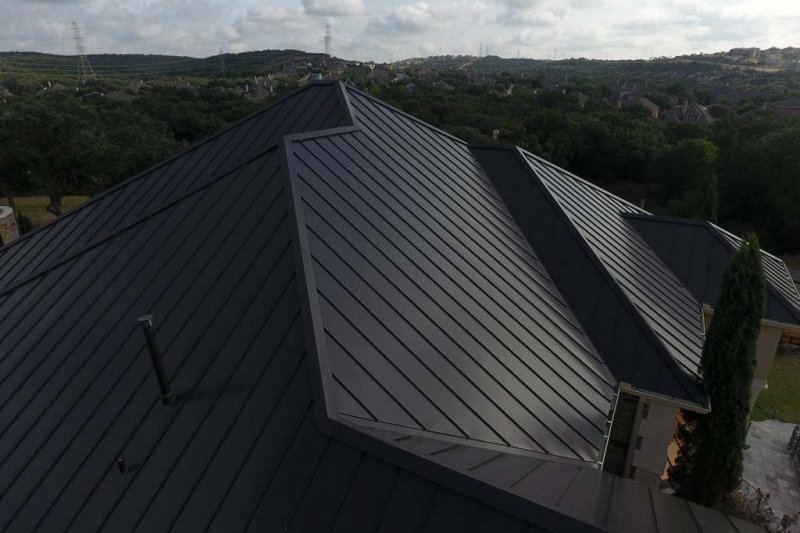
Pros of Standing Seam Systems:
- Superior Water Resistance: With no exposed fasteners on the panel surface, the risk of leaks associated with fastener deterioration is virtually eliminated. The raised seams divert water away and the concealed fastening system creates a highly weather-tight barrier, making it exceptionally well-suited for areas with significant rainfall or snow accumulation.
- Exceptional Longevity: Because the fasteners are protected from the elements, the lifespan of a standing seam roof is dictated by the durability of the metal panels themselves, which can easily last 50 years or more with minimal maintenance.
- Low Maintenance: Beyond periodic cleaning and checking flashing details, standing seam roofs require very little maintenance compared to exposed fastener systems. There are no exposed fasteners to worry about tightening or replacing.
- Aesthetics: Standing seam roofs offer a clean, modern, and sophisticated look with their smooth panels and prominent vertical lines. They are available in a wide range of colors and finishes to complement various architectural styles.
- Better Performance Against Thermal Movement: Metal roofs expand and contract with temperature changes. Standing seam systems, particularly those using clip systems, allow the panels to move more freely, reducing stress on the panels and fasteners and minimizing issues like oil canning (visible distortion or waviness in the flat areas of the panel).
Cons of Standing Seam Systems:
- Higher Initial Cost: Standing seam systems have a higher material cost per square foot due to the complexity of the panel profiles and fastening systems.
- More Complex Installation: Installation requires specialized tools and a higher level of skill and experience from the roofing contractor. This typically translates to higher labor costs. The process is more intricate, involving careful panel alignment and seam locking.
Key Differences & Comparison
Let's directly compare the two systems across critical factors:
1. Fastener Type and Leak Risk:
- Exposed Fastener: Fasteners penetrate the panel surface. Washers provide the seal, but they are exposed to UV and weather, leading to potential degradation and leaks over time.
- Standing Seam: Fasteners are hidden beneath the panel or within the seam. The seam itself provides the weather seal. This dramatically reduces the risk of leaks related to fastener failure. This is a critical difference impacting long-term performance, especially in climates with freeze-thaw cycles or heavy precipitation.
2. Longevity:
- Exposed Fastener: Limited by the life of the exposed fasteners and washers. Typically 20-30 years before potential issues arise requiring fastener maintenance or replacement.
- Standing Seam: Limited by the life of the metal panel itself. Easily 50+ years, often outlasting the lifespan of the home's original owners.
3. Maintenance:
- Exposed Fastener: Requires periodic inspection and potential tightening or replacement of fasteners as washers wear out.
- Standing Seam: Requires minimal maintenance, primarily limited to inspecting flashing, gutters, and ensuring debris is removed.
4. Installation Complexity and Cost:
- Exposed Fastener: Simpler, faster installation. Lower labor costs. Requires less specialized equipment.
- Standing Seam: More complex, slower installation. Requires specialized tools (like mechanical seamers) and highly experienced installers. Higher labor costs. The initial material cost is also higher. Overall, the upfront cost is significantly greater for standing seam.
5. Aesthetics:
- Exposed Fastener: Visible grid pattern of fasteners. Can look more utilitarian.
- Standing Seam: Clean lines, smooth panels, concealed fasteners. Offers a more modern or upscale appearance.
6. Weather Resistance:
- Exposed Fastener: Adequate water shedding, but vulnerable at fastener points over time. Less effective at handling significant snow loads or ice dams compared to standing seam.
- Standing Seam: Excellent water and snow shedding. The raised seams provide superior protection against wind uplift and water penetration, making it highly resistant to severe weather. The ability for panels to move allows better handling of thermal expansion and contraction caused by temperature swings, reducing stress on the system.
7. Thermal Movement:
- Exposed Fastener: Panels are rigidly fastened, which can restrict movement during temperature changes. This can lead to panels buckling or fasteners loosening over time.
- Standing Seam: Designed to accommodate thermal expansion and contraction. Clip systems allow panels to float, minimizing stress and preventing distortion.
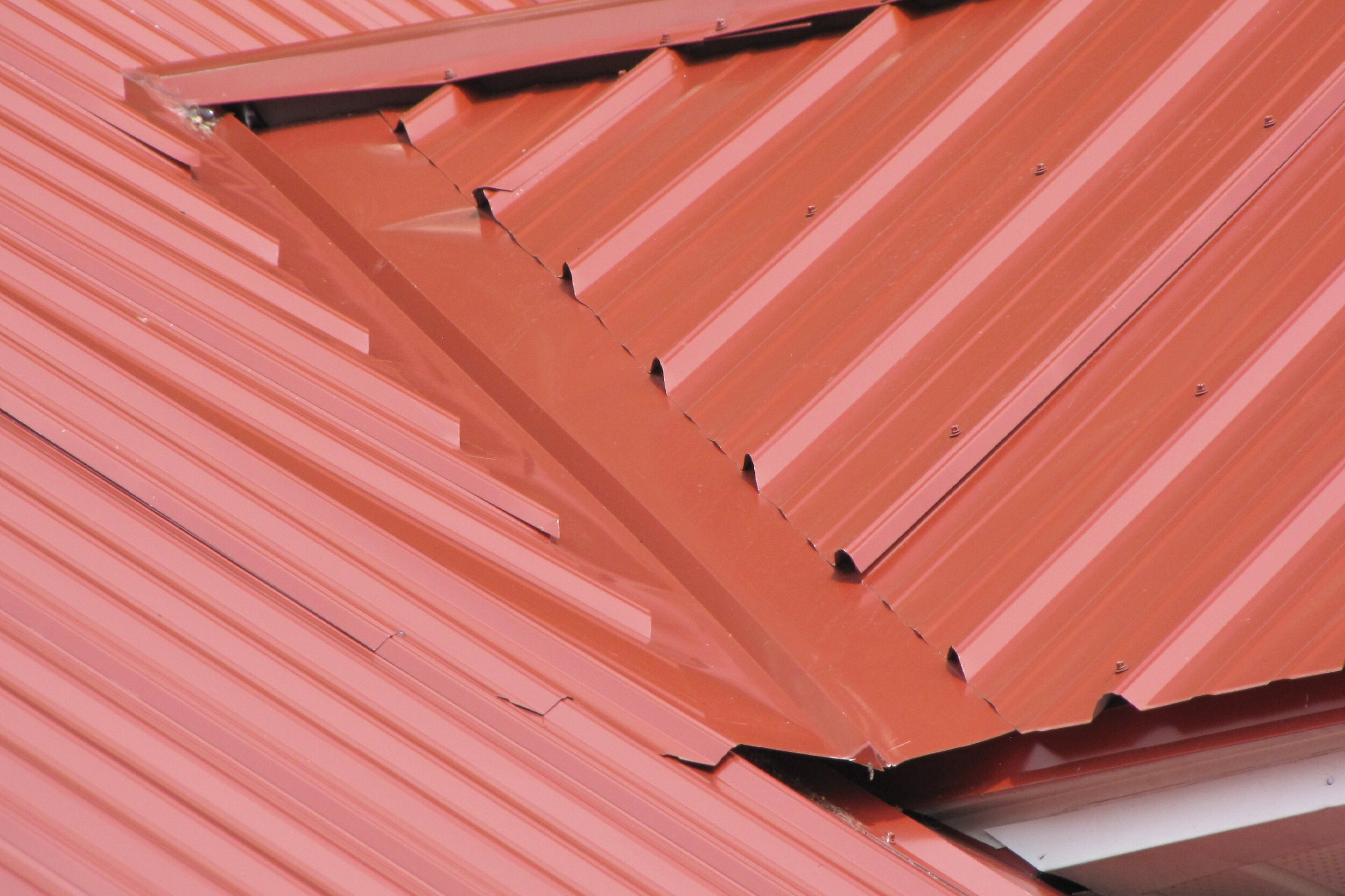
Which is Right for Your Warren Home?
Choosing between standing seam and exposed fastener metal roofing for your home in Warren, Oregon, depends on balancing several factors, including your budget, desired lifespan, maintenance tolerance, aesthetic preferences, and the specific climate conditions your roof will face.
For homeowners prioritizing the lowest possible upfront cost and who are comfortable with more frequent maintenance (checking and potentially replacing fasteners every 5-10 years), an exposed fastener system might be considered, perhaps for structures like detached garages or workshops. However, for a primary residence, particularly given the potential for heavy rain and temperature fluctuations in the Pacific Northwest, the long-term risks associated with exposed fasteners and their seals should be carefully weighed. The potential for leaks and the need for ongoing maintenance can negate the initial cost savings over the roof's lifespan.
For those seeking the longest lifespan, lowest maintenance, and best long-term weather protection, a standing seam system is generally the superior choice for a residential roof. While the initial investment is higher, the enhanced durability, leak resistance, and minimal maintenance requirements often result in a lower total cost of ownership over 50+ years compared to replacing an exposed fastener roof (or multiple asphalt shingle roofs) within the same period. The peace of mind that comes with a highly weather-resistant roof is also a significant factor for homeowners.
Planning a large project like a roof replacement requires careful consideration of costs and options. You can start by getting an estimate for different metal roofing systems.
Get a precise roof estimate instantly
If you are facing an urgent roofing issue, such as a leak that might influence your decision or timeline for a replacement, or if you need a professional opinion on the current state of your roof and its suitability for a metal system, immediate action is necessary.
For urgent situations like active leaks or damage, getting a professional inspection is the most important step.
Book a roofing appointment now
Consider the pitch of your roof as well. While both systems can work on various slopes, standing seam is particularly effective on low-slope roofs where water drainage needs maximum assistance. The raised seams help guide water off the roof more effectively than the overlaps in exposed fastener panels.
Finally, the aesthetic impact is subjective but important. Standing seam offers a sleek, modern look, while exposed fastener has a more traditional, often industrial, appearance. Consider which style best complements your home's architecture.
Important Considerations Before Deciding
Regardless of which metal roofing system you lean towards, several other factors are crucial to a successful project:
- Professional Installation: The performance and lifespan of any metal roof heavily depend on the quality of the installation. This is especially true for standing seam systems, which require specialized skills and tools. Ensure you hire a roofing contractor with extensive experience specifically in installing the type of metal roof you choose. Ask for references and examples of their metal roofing work.
- Underlayment: A high-quality underlayment, often synthetic or peel-and-stick ice and water shield, is essential beneath a metal roof. It provides a secondary barrier against moisture if any water manages to get past the metal panels. Given Oregon's climate, using a robust underlayment is particularly important.
- Flashing Details: Proper flashing around chimneys, valleys, vents, and other penetrations is absolutely critical to preventing leaks, regardless of the panel system. Ensure your contractor has a meticulous approach to flashing.
- Ventilation: Adequate attic ventilation is still necessary with a metal roof to prevent moisture buildup and regulate temperature. Ridge vents, soffit vents, and potentially other ventilation methods should be part of the overall roofing system plan.
- Warranties: Understand the warranties offered on both the metal panels (often 30-50 years or non-prorated lifetime) and the contractor's workmanship (typically 5-10 years).
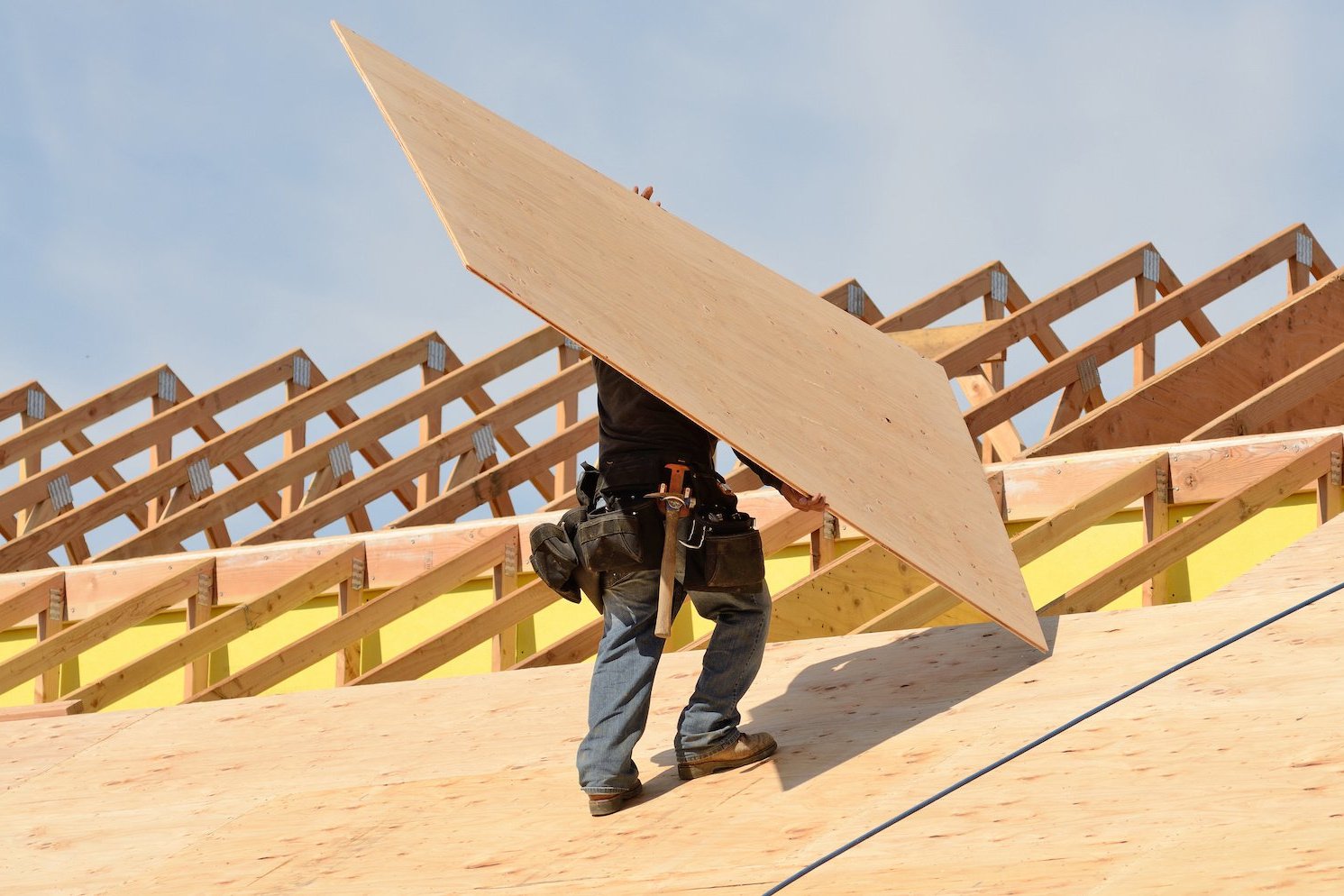
Choosing a metal roof is a significant investment, but one that can add substantial value, protection, and longevity to your home. By understanding the fundamental differences between standing seam and exposed fastener systems, you are better equipped to discuss options with professionals and make the choice that is best for your specific situation.
If you have questions after getting an estimate or need professional advice tailored to your home and the specific conditions in Warren, Oregon, booking a consultation is the next logical step.
Schedule a consultation with a local roofer
Making Your Metal Roof Decision
Selecting the right metal roofing system is a long-term decision with significant implications for your home's protection and value. While exposed fastener systems offer a lower initial cost, the inherent vulnerability of exposed fasteners to weather and degradation makes them a less ideal choice for primary residential roofs where maximum longevity and minimal maintenance are desired. The need for periodic fastener inspection and potential replacement adds ongoing costs and potential points of failure over time.
Standing seam systems, despite their higher upfront cost, provide superior leak protection due to concealed fasteners, boast a much longer lifespan (often 50+ years), and require significantly less maintenance. Their design also handles thermal expansion more effectively and offers a cleaner, more modern aesthetic that can enhance curb appeal.
For most homeowners planning a long-term investment in their property, especially in a climate like Warren, Oregon, where reliable weather protection is paramount, the benefits of a standing seam metal roof typically outweigh the higher initial expense. It represents a more robust, durable, and ultimately lower-maintenance solution over its lifetime.
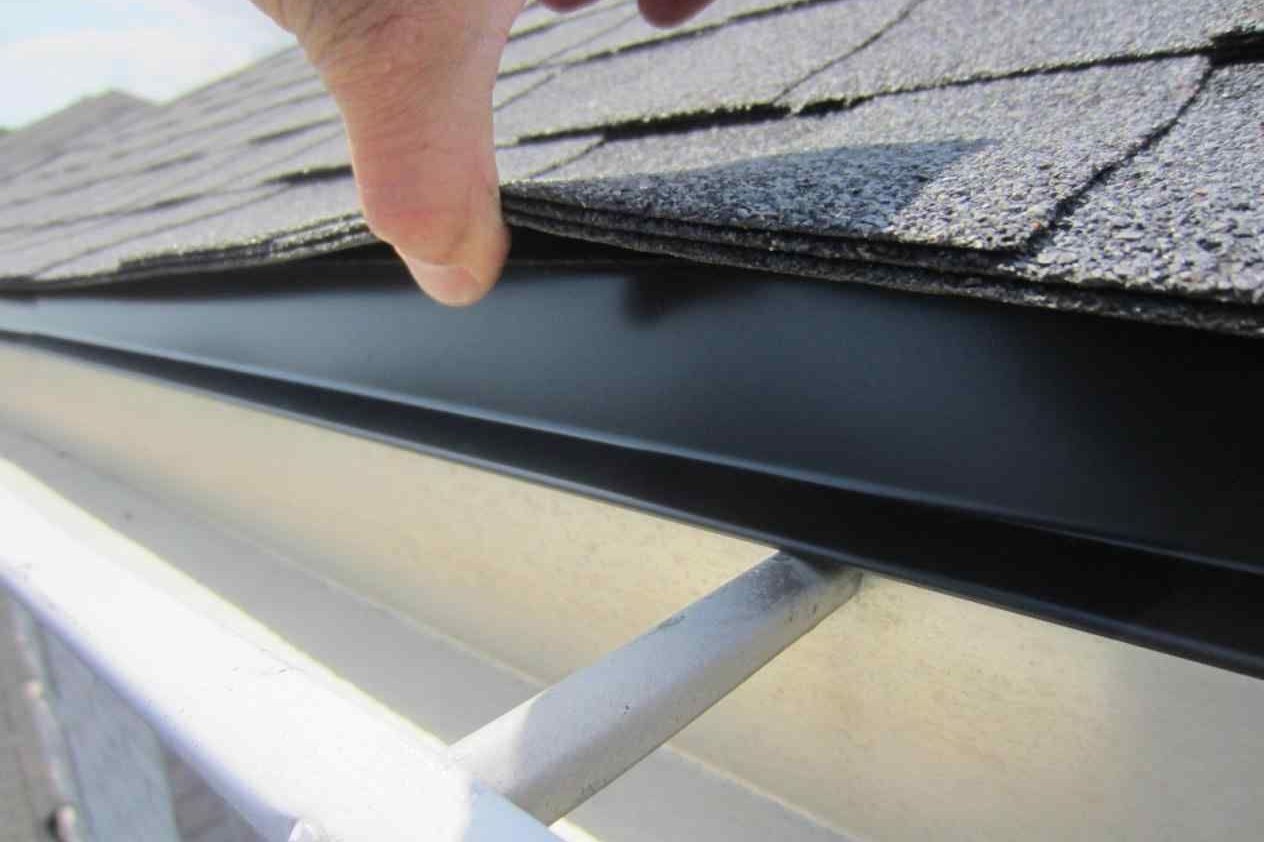
Before making your final decision, gather as much information as possible. Compare detailed quotes for both system types from reputable contractors experienced in metal roofing. Consider the total cost of ownership over 30, 40, or 50 years, factoring in potential maintenance and earlier replacement needs for exposed fastener systems versus the longevity of standing seam.
Understanding the potential costs upfront can greatly assist your decision-making process when comparing different metal roofing options.
Get an instant cost estimate for your roof
Ultimately, the best roof is one that is properly specified for your home's needs and expertly installed. Consulting with local roofing professionals familiar with metal roofing in the Warren area can provide invaluable insights tailored to your specific property and local building requirements.
